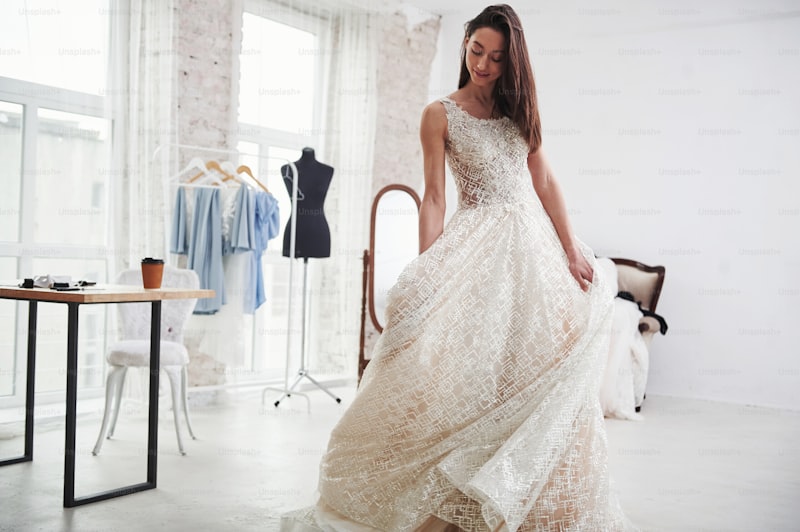The Secrets of Hidden Boning and Structure in Fashion Design
Understanding Hidden Boning and Structure in Fashion
When it comes to fashion design, especially in the world of couture and bespoke garments, hidden boning and structure play a crucial role in achieving that perfect silhouette. This article will explore the intricacies of hidden boning, its applications, benefits, and why it is a must-know technique for aspiring fashion designers and enthusiasts alike.
What is Hidden Boning?
Hidden boning refers to the use of supportive materials incorporated discreetly into garments to create shape, provide structure, and maintain the integrity of delicate fabrics. Often utilized in corsetry, evening gowns, and structured dresses, hidden boning helps to sculpt the body and enhance the overall aesthetic of a garment.
The Importance of Structure in Fashion Design
Every designer knows that the structure of a piece is paramount. A well-structured garment not only elevates the design but also impacts the wearability and comfort of the dress. Here are some reasons why structure is essential:
- Shape Maintenance: Hidden boning helps retain the desired silhouette throughout the day.
- Support: It provides the necessary support for both the fabric and the wearer, enhancing comfort.
- Durability: Well-structured garments withstand the test of time, making them a worthy investment.
- Aesthetic Appeal: The right structure can transform a simple design into a show-stopping piece.
| Benefits of Hidden Boning | Examples of Use |
| Enhances body shape | Corsets, Ball gowns |
| Improves garment longevity | Bridal wears, Evening outfits |
| Allows for intricate design techniques | Fashion statements, Runway pieces |
How Hidden Boning Works
Hidden boning serves as an architectural element within the garment. Designers typically use materials such as plastic, steel, or other composite substances that can be shaped and molded. These elements are often sewn into channels created within the lining or fabric of the garment. This technique ensures that they remain concealed while performing their essential function.
When designing a garment with hidden boning, here are some elements to consider:
- Type of Boning: Decide on the material based on the type of garment and desired level of support.
- Placement: Strategically position the boning to enhance areas that require extra structure.
- Comfort: Ensure that the boning does not create discomfort or restrict movement.
- Fabric Compatibility: Choose fabrics that can work harmoniously with the boning to achieve the desired results.
Applications of Hidden Boning in Fashion
Hidden boning is commonly applied in various types of garments, each serving a different style purpose:
- Bridal Wear: Wedding gowns often incorporate hidden boning to create dramatic silhouettes and support the intricate designs.
- Evening Gowns: For red carpet events, structured gowns provide a refined, tailored look while ensuring the wearer feels elegant.
- Corsetry: The traditional use of boning in corsets emphasizes the waistline, creating an hourglass figure that has long been celebrated in fashion history.
- Formal Attire: Hidden boning in blazers and tailored dresses can enhance professionalism and aesthetic appeal.

Choosing the Right Boning for Your Design
Not all boning is created equal. It’s crucial to choose the right type based on your design’s needs. Here’s a quick overview of the most common types of boning:
| Type of Boning | Characteristics | Best Use Cases |
| Plastic Boning | Flexible, lightweight | Casual dresses, children's clothing |
| Steel Boning | Sturdy, creates strong shape | Corsets, structured evening gowns |
| Spiral Boning | Allows for more movement | Historical garments, dance costumes |
DIY Hidden Boning: A Step-by-Step Guide
For those interested in integrating hidden boning into their designs, here is a simple guide to get started:
- Choose Fabric: Select a fabric that has enough weight and structure to accommodate boning.
- Select Boning: Decide which type of boning best suits your design and intended silhouette.
- Create Channels: Sew channels into the lining of your garment where the boning will be inserted.
- Insert Boning: Carefully slide the boning through each channel and secure it in place with stitches.
- Finish Edges: Ensure all edges are finished to avoid any poking or discomfort for the wearer.
Common Questions Related to Hidden Boning and Structure
Many individuals exploring the world of fashion design may have additional inquiries regarding hidden boning:
1. How do I know if my garment needs boning?If your design includes structured elements, like a fitted bodice, boning will significantly enhance its support and shape.
2. Can hidden boning be added to existing garments?Yes, although it might require some alterations to the garment, it is possible to integrate boning to enhance support.
3. What are suitable alternatives to traditional boning?Sturdy interfacing or hidden stay stitch can sometimes achieve a similar support effect without the use of boning.
Conclusion and Recommendations
Hidden boning and structure are vital parts of creating beautiful, functional garments that stand the test of time. By understanding the nuances of this technique, designers can effectively bring their visions to life. It is always recommended to experiment with different types of boning and placements to uncover the best options for specific designs.
As a final note, remember that while aesthetics are important, comfort and wearability should never be compromised. Each garment should allow the wearer to move gracefully while feeling supported and confident. Embrace the art of hidden boning, and let it enhance your fashion creations!